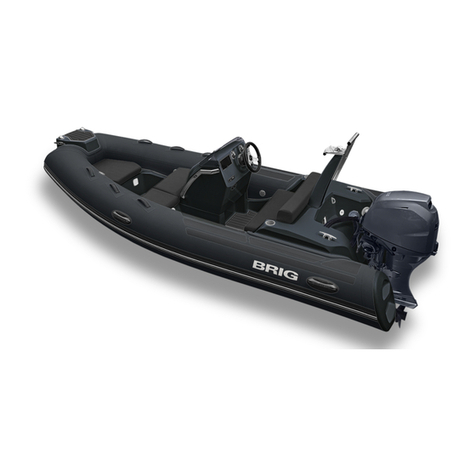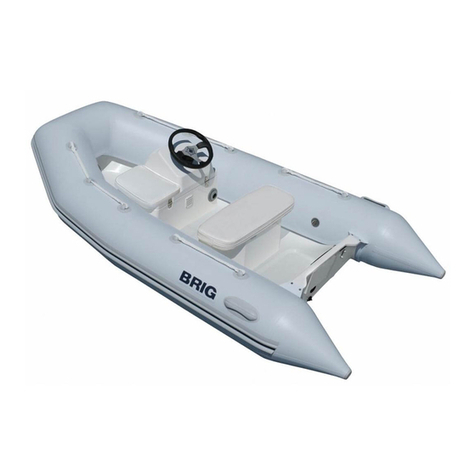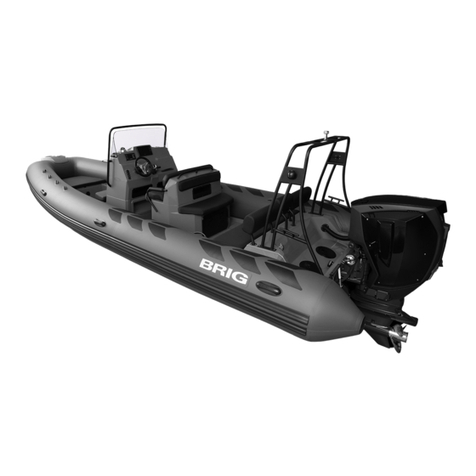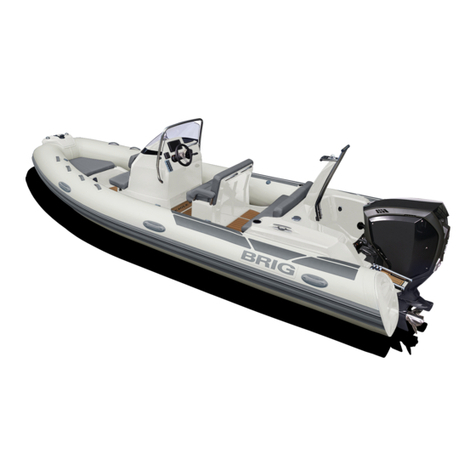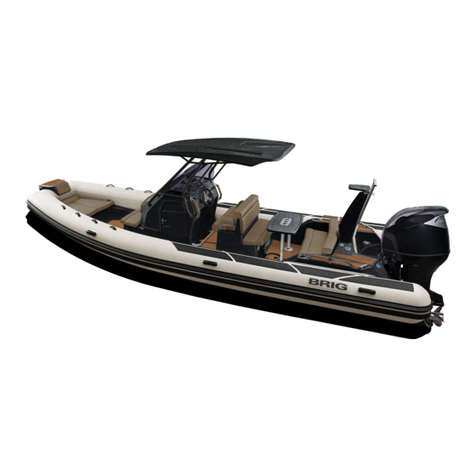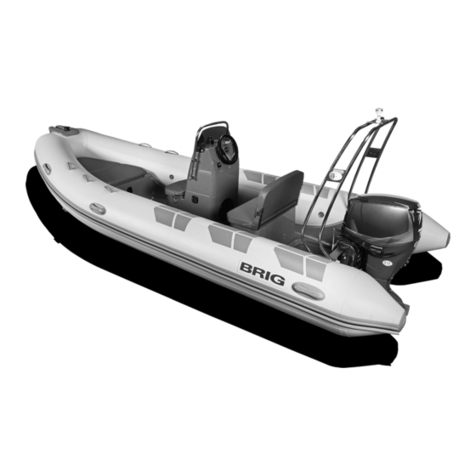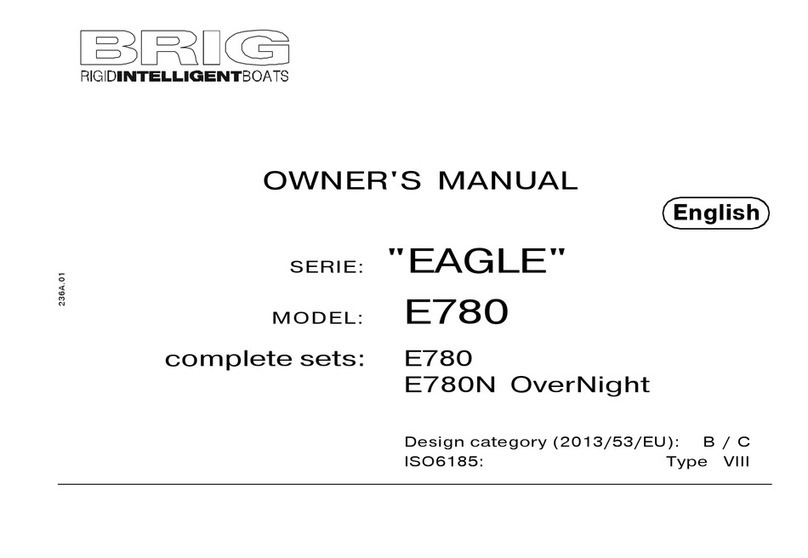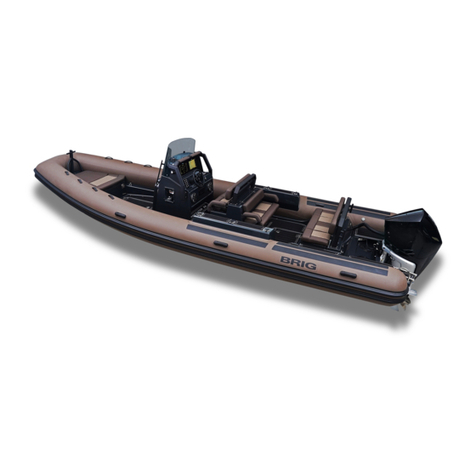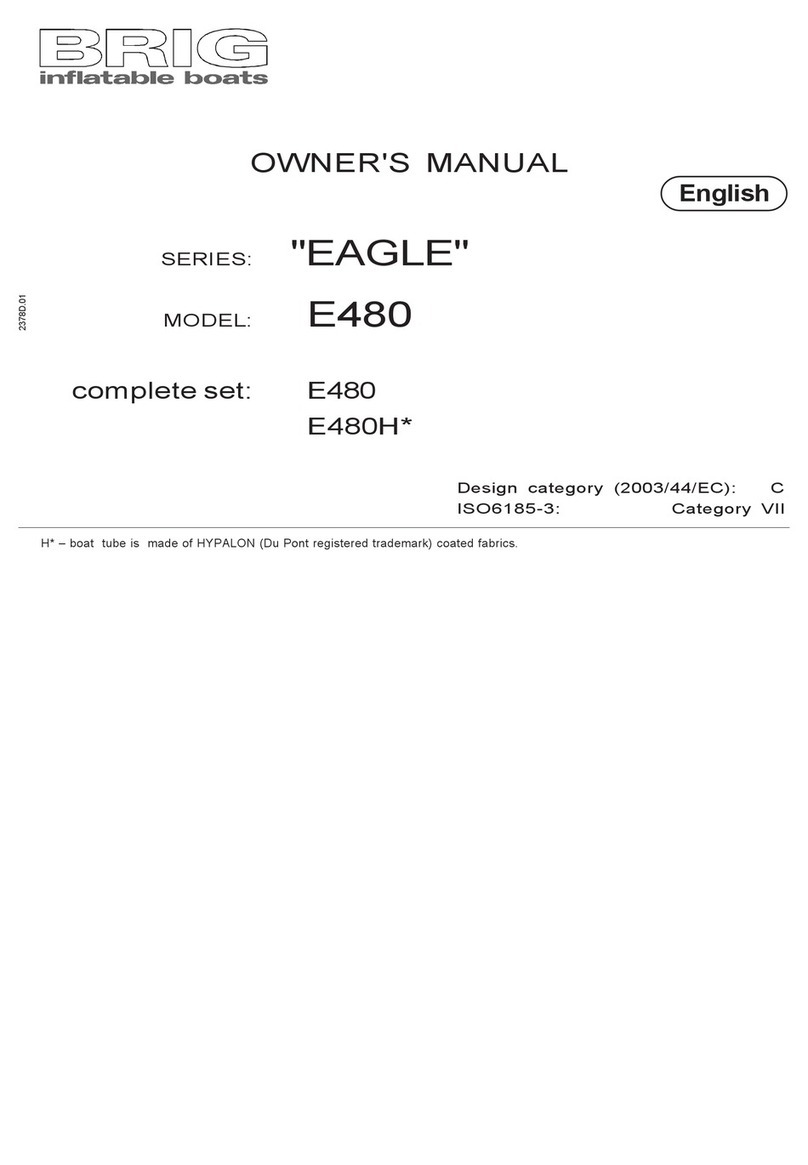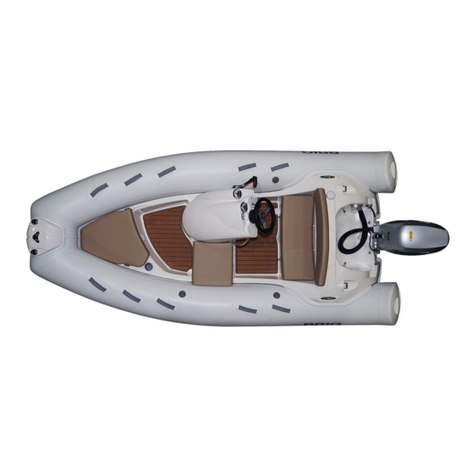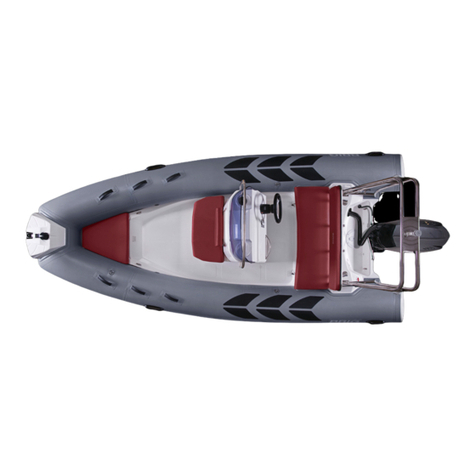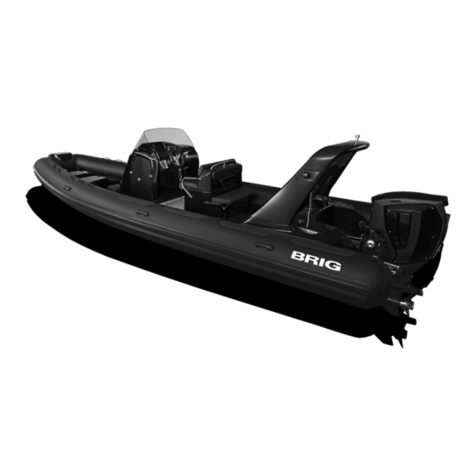
— 7 —
2381.01-2003
zz
zz
z
Presence of sharp and pricking objects on board
Despite the strong shell of the boat we are recommended to
handle sharp and pricking objects being on board with care. For
example, it concerns a knife blade, fish-hook point, etc.
zz
zz
z
Rocky shore, mole, shoals (for example, sand banks,
coral reefs, rocks)
Approach rocky shores, shoals, moles, etc. carefully to avoid damages
to the boat. It is strictly prohibited to drag the boat across rough surfaces
(shingle, rocks, concrete, etc.).
zz
zz
z
Check at navigation
In case of prolonged navigation with the use of an outboard
engine, regularly check to ensure that the engine is reliably
attached to the boat. If the engine was attached carelessly the
attachment may work loose under the action of vibration.
Besides, check air chambers pressure at regular intervals, since
the pressure may vary under the effects of outside air tempera-
ture and atmospheric pressure variations.
Never forget to monitor regularly the quantity of fuel in the fuel
tank. Keep always in mind that the quantity of fuel should be
sufficient for you to sail to your final destination.
zz
zz
z
Availability of rescue means (life-saving jackets, distress
signals, spare parts)
If you are planning to go beyond the protected water areas you
should provide all passengers on board with life-saving jackets. All
passengers should put on life-saving jackets under strong wind and
heavy seaways conditions. Those passengers who cannot swim
should always carry the life-saving jackets while on board! It is also
recommended to keep constantly distress signal means on board.
zz
zz
z
Towing
At towing the towing rope length should not be at least 3 lengths
of the boat, the rope being secured to both boats in a manner
ensuring its immediately, single-motion release. The steersman
of the towed boat should be assisted by another crew member to
monitor the process of towing. In this case, certain communica-
tion gestures should be agreed upon beforehand.
zz
zz
z
Damage to one of air chambers
The inflatable boat is designed to provide an adequate stability
in case of the complete damage to one the air chambers (balloon
compartments) at the expense of the remaining air chambers and
wooden floor. Thanks to it, you will be able to reach safely the
nearest shore. Reduce the speed and shift your body to the
undamaged part of the boat. Watch changes in stability. After
this immediately head for the nearest shore. To prevent
penetration of water into the boat, pull the shell of the damaged
air chambers upwards.
zz
zz
z
Anchor and mooring fast fastening
Fix the anchor and towing ropes in the forebody of the boat to the front
towing ring. Fix the back spring on the transom via special holes.
zz
zz
z
Danger of currents and wind
Before navigation of the boat in unfamiliar waters make detail
inquiries about local conditions and regulations! Currents, wind,
shoals, rising and falling tides, as well as weather variations may
imply serious danger!
zz
zz
z
In emergency stay in boat
In any unexpected situation (engine failure, boat damage, etc.) do
not ever leave the boat provided it is still afloat. Even if you believe
that the shore is just nearby stay in the boat, since you will be looked
for in this particular place and, most probably, will be found. Should
the boat become partially flooded throw heavy objects (batteries,
fuel tank, engine) overboard to ensure additional floatability.
The "BRIG" Company employees would like to wish you a
pleasant and safe leisure time!

